Rewal - a useful plant, brought to our region from Southeast Asia. This is a vitamin vegetable culture that is widely used in cooking and is an excellent addition to the daily diet. Juicy young leaves and rhubarb sweets with an acidic-refreshing taste is a valuable source of vitamins, pectins and minerals. This is one of the first vegetables that appears on our desks early in spring. Using rhubarb food, you can solve the problem of seasonal deficit of vitamins, as well as to establish the work of the gastrointestinal tract. Rhubarb is an unpretentious garden culture, which can be easily grown in the country area.
Rewous: Description
Rhubarb belongs to the genus of grassy plants of the family buckwheat. This is a perennial with a powerful root system and a thick riveted stem of a reddish shade. Stem - straight, hollow, in diameter from 2 to 5 cm, its height reaches 1 meter, some types of plants grow up to 2.5 meters of height. At the top of the stem is formed a large blurred inflorescence up to 50 cm long. Flowers rhubarb on the second or third year after planting white, greenish, less often pink, red flowers.
The root leaves are rhubarb large and solid, and stomens are small. The leaves grow on dense stiffs, reaching the length of 70 cm, 3-4 cm wide. The color of the leaves - green or reddish shades. Juicy sweets have a high nutritional value, have a sour taste, resembling an apple and lemon. They are used to prepare compotes, jelly, stuffs for pies, jam, candied. Reznaya fruit - triangular nuts, ripening time - July. Rhubarily is characterized by a short vegetative period and gives a high harvest for a whole year.
In one place the plant gives a good harvest from 10 to 12 years. Rhubarb is a frost-resistant plant that is not afraid of spring frosts and withstands a minus temperature to 10 degrees. But, young kidneys can normally develop only at 2-6 degrees below zero. The optimal temperature for rhubarb growth is 16-20 degrees of heat. The hot climate is unfavorable for the plant, since its gentle stiffs are coarse and become fibrous, losing juiciness.
Rhubarb: Sorta
More than 50 kinds of plants are known, most of the grades grow mainly in the Rhubarb homeland - in Asia. The most famous types of plants:
- Altai rhubarb. Rhubarb growing in highlands and rocky terrain of Siberia, Mongolia, China. Perennial, reaching a height of up to 1.2 meters. The stem is strong, powerful, hollow inside, in diameter 1-3 cm. Altai rhubarb has a powerful root system. The root of the plant is used in folk medicine for the treatment of psoriasis, stems for the treatment of diseases of the gastrointestinal tract, anemia, tuberculosis.
- Rhubarb tenten tangutsky. Motherland of the species is the mountainous terrain of the South and the West of China. In the people, I call the jewel of the drug. The stalks of the plant reaches a height of up to 2 meters, have a reddish tint, ribbed. The leaves are assembled at the base in the root rosette, the cutters are long and fleshy. Used in folk medicine as a laxative and choleretic agent.
In our region, such popular rhubarb varieties are grown as:
- Victoria. Early high-yielding grade is distinguished by an amazing taste. The length of the petioles up to 60 cm. The variety is distinguished by abundant blossoms, which, according to gardeners, is its only drawback.
- OGRSKY-13. The crop, the mid-length variety with large cutters has excellent taste.
- Moscow-42. Early grade has a high yield.
- Large-cuff. Resistant to diseases and pests early grade. Resistant to low temperatures, but referring to the soil. Puffs - juicy and sweet.
- Red early. Early grade with strong bright red cutters. It has excellent taste.
How to grow rhubarb on the country
Rhubarb is undemanding to growing conditions, a frost-resistant multi-year culture that can grow and bring a generous harvest in one place for 10 years. Therefore, the most important condition for the successful growing garden crop is the choice of place for landing.
Child selection for river landing
Rhubarily shadowing culture, can grow in a half, but it develops better on the lighted areas. Especially needing good lighting young shoots during the period of active growth. The main requirement to the landing site is a fertile soil with a natural air exchange. An ideal soil for growing plants is a drum soil saturated with organic fertilizers without groundwater. On poor soil, rhubarb leaves will be small. The soil on the bed should be loose, moistened.
Preparation of beds for landing
Preparation of the plant for planting the plant begins in the fall. The landing place should be well overcooked by the shone of shovels, bring organic fertilizers to the ground: 2-3 buckets of manure, humus, peat on a square ground meter. If the soil is acidic, it is necessary to add haired lime or dolomite flour.
Re-processing of the soil is made in early spring. The land on the garden needs to be jumped with a pitchfork or robbles to deposit mineral feeding, at the rate of square meter:
- Urea - 30 g
- Superphosphate - 60 g
- Potassium chloride - 30 g.
Rewal: reproduction
You can grow rhubaries with seeds or rhizome division.
Growing rhubarb
Using a seed method of breeding, it is worth remembering that harvesting (cutting of cherries) is carried out only for the second year of the plant. In the first year after landing, the rhubarb is actively increasing the vegetative mass, and the premature twisting of the cherries will weaken the young bush. Reproduction seeds occurs in several stages:
- Preparation of seed material. Rhubarb seeds soaked in wet marla, to swelling. It is necessary to periodically moisten the gauze with warm outstanding water and prevent the seed dryness. For swelling, seeds will be required for several days (3-4 days). As soon as the sprouts are 1-2 mm long, they are dried - the seeds are ready for landing in the container in a greenhouse or a greenhouse.
- For sowing seeds prepare drawers with fertile, loose soil. In the ground it is necessary to make grooves, where the seeds of rhubarb are planted. Landing depth - 2-3 cm. Seed consumption during landing - 3-4 grams per meter of landing area. After the excretion of the sowing material into the ground, the ground is watered with warm water.
- The first abundant shoots appear on 4-5 days after sowing. As soon as the seedlings appear a pair of strong leaves, the seedlings can be broken down, retarding between shoots a distance of 20-25 cm, so that the plant is actively developing.
- As they grow, the seedlings are watered, the soils are fried, weighing weeds, the organic and complex of mineral fertilizers contribute.
- By autumn, the height of young bushes reaches 25-30 cm, on which 4 developed leaves are formed.
- The overwhelming specimens of early spring are ready for a transplant to a permanent place, in open ground.
- Bustards are transplanted in shallow holes according to the scheme 1 × 1 m. Deep by a young plant, the top kidney should not be covered with the ground by more than 1-2 cm. After transplantation, the plant should be poured.
Reproduction of rhubarb destruction bush
The easiest way to plant rhubarb is a vegetative method of breeding, the division of the bush. This method of reproduction is carried out in the autumn period.
- For reproduction, large adult plants having massive reddish stiffs are chosen.
- A bush need to dig up and with the help of a sharp knife to divide the rhizome into several parts. Each new plant should have 1-2 growth kidneys.
- Dellets should be well dried in the sun, not allowing their posting.
- Prepared new plants are planted into the holes of 60 × 60 × 60 cm. On the bottom of the holes, it is necessary to lay the layer of organic matter (compost or humid). Locked seedlings are tightly tamped, pour themselves.
- Regular watering of a young plant during the week is needed.
Rewal: Care Features
Rhubarb is unpretentious garden culture, rarely susceptible to diseases and attack of harmful insects. Another feature of the plant - weeds are practically not formed around the bush. In order for the plant to bear a high harvest of juicy, delicious and useful cuffs, it is necessary to regularly carry the soil under the bush, ensure timely watering and feeding.
Reward loosening and mulching
Rhubarily grows well in a loose ground. Especially needing the roofing of the roasting zone of young plants, their roots need to ensure the influx of oxygen for further rooting. After landing, you need to mulch the soil well, and during active growth to remove rare weed grass in a timely manner.
Watering Rhubnia
Rhubarb is a moisture culture and needs abundant timely watering. Insufficient moistening of the soil can lead to the decreement of gentle and juicy stalks of the plant, they will become unsuitable for eating. Watering the bushes 1-2 times a week (water bucket per 1 sq. M. soil). During the period of active growth, the water rate increases twice. But, you should not allow the depreciation of moisture in the soil. In the arid summer, the rhubarb leaves spray in the evening or morning hours, as they quickly lose moisture. In winter, rhubaries do not watered.
Undercotting Rhome
Rhubarily needs feeding only during the growing season, organic fertilizers prefers, such as cow manure, diluted with water. It is recommended to periodically replace the manure with humus. In the ranks between the bushes, 1-2 buckets of organic fertilizer contribute. Early spring it is advisable to introduce mineral fertilizers.
Trimming Revel
To ensure high yield, it is necessary to remove the uterine stems in a timely manner, which weaken its growth. Once rhubarb blooms, its floral arrows should be deleted.
Time for feeding - early spring and late autumn.
How to collect jerny seeds
If you want to make yourself assembled seeds yourself, you need to choose a separate jerny bush and wait for its flowering. Inflorescences with toured seeds need to be cut and tied with small stranges, for further maturation. After aging seeds, they are dried and stored in the tissue bags. One plant can give up to 100 grams of seeds.
Rewand: protection against diseases and pests
Rhubarb - Culture, resistant to many diseases and pests. Very in rare cases, it is possible to attack the plant of such pests as:
- Rubber weevil. Insect brown or gray, 0.5 cm long powered by leaves of the plant. To combat it, it is applied to the processing of bushes before the blossom began with a 40% phosphamide solution. After flowering, a chemical composition is reused.
- Capping and potato scoop. They have the form of caterpillars that feed on rhizome and stuffing plants. You can notice the cabbage scoop by twisted leaves, the plant slows down its height, looks weak. When pest detected, damaged leaves are cut off. Special attention should be paid to neighboring plants in bed. The female scoop can lay eggs in the leopa and thistle leaves.
- Shattered leaf. Small pest, which feeds on a hired part of the plant, eating in the leaves of the hole. Damaged leaves are removed.
Excess moisture in the soil can lead to the development of fungal diseases, such as gray rot, malievable dew. It is possible to infect ramuleriasis. The disease for which the appearance on the stiffs of the plant of small spots of brown color is characteristic. Over time, the stains become paler, and the leaves dry out. For treatment, we use spraying bushes by bordrian liquid. The plant is not subject to treatment, infected instances are removed and burned. To avoid possible problems in growing, it is not recommended to plant rhubarb's bushes too thick.
When collecting a revive harvest
The first harvest of rhubarb yield - already at the end of March or early April. The crop is collected only from the second year after planting a young plant. The first year of life rhubarb is gaining strength. The rhubarb is ready for use when its leaves have a length of about 25-30 cm, and in diameter reached 1.5 cm. Mature stiffs are twisted at the base of the bush. Cells can not be cut to not damage the plant growth point. Collecting petioles, you need to leave a few leaves on the bush to avoid root depletion. You can collect a crop several times for the season, 3-4 receptions within 8-10 weeks before the beginning of August. 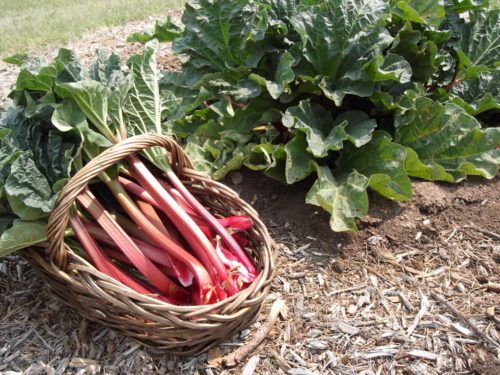
But the greatest value is rhubarbing early spring, it is a storehouse of vitamins and the beneficial substances necessary for our body after a long winter. Spring young rhubarb leaves are used for cooking, borscht, slats. Vitamin desserts are prepared from damp desserts of red-bearing rhubarb: mousses, jelly, jams, candied eggs, as well as refreshing drinks (kissel, compote).
Green rhubarb sweets - beautiful base for soups, vegetable puree and stew. In the first 2-3 years, you can collect up to 2.5 juicy and nutritious cuffs from one bush. The yield of an adult bush is up to 6 kg per season. Rubber stems can be stored in the refrigerator for about a week. They need to be tightly wrapped into the food film. If you want to make a blank of vitamin sticks for the winter, the stalks need to be well flushed, dry, then put in a vacuum film and store in the freezer. After freezing, rhubarb does not lose its beneficial properties and taste.
Rhubarb is an unpretentious useful plant that is easy to grow in the country area. An unforgettable taste and beneficial properties of the plant do not put anyone indifferent. Rhubarb has a high yield, collect which can be several times per season. Feeding yes growing on a garden of rhubarb varieties, various in the timing of crumbs, you can collect a crop all year round.


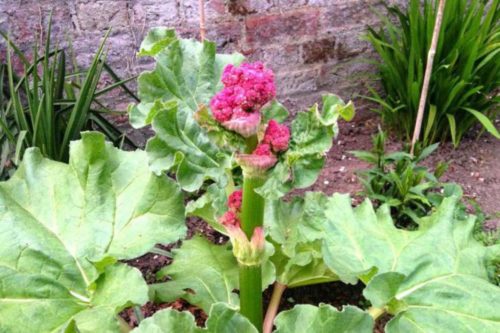

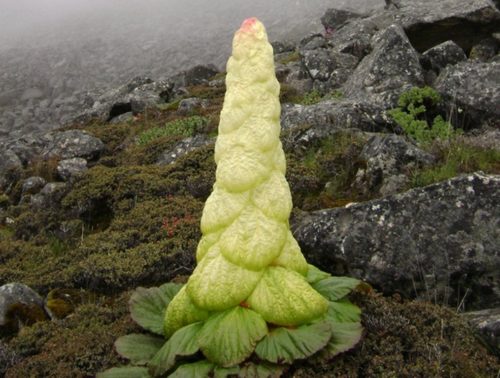
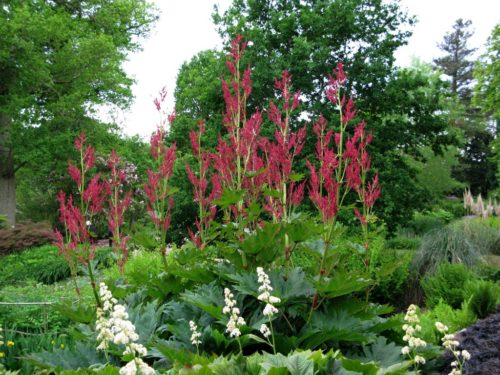
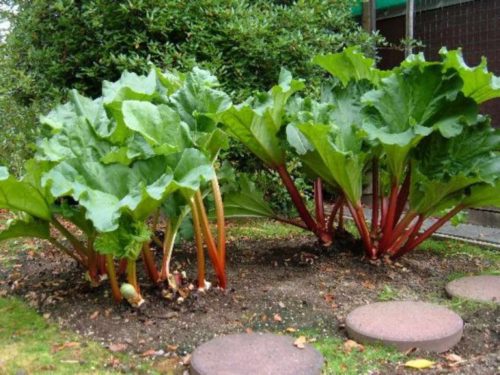
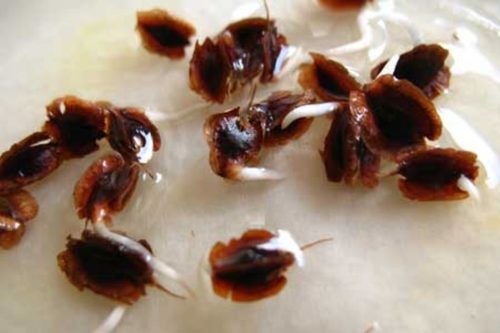
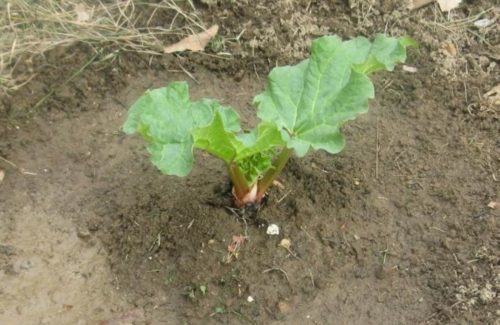
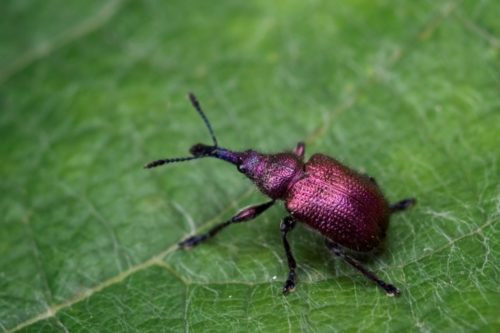
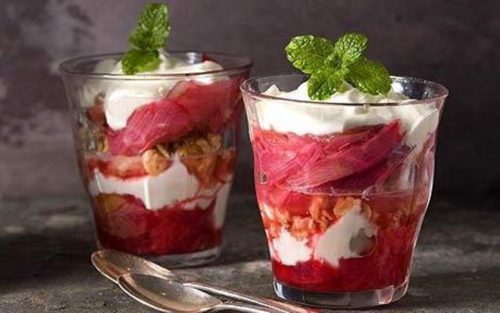
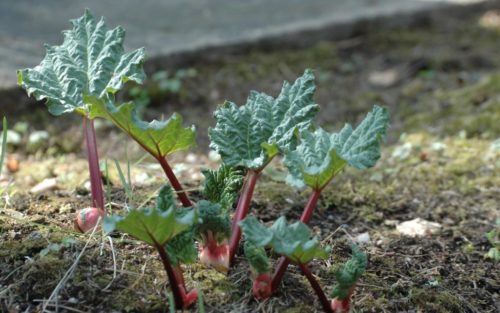
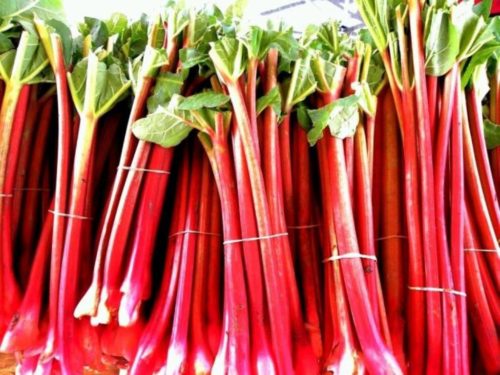
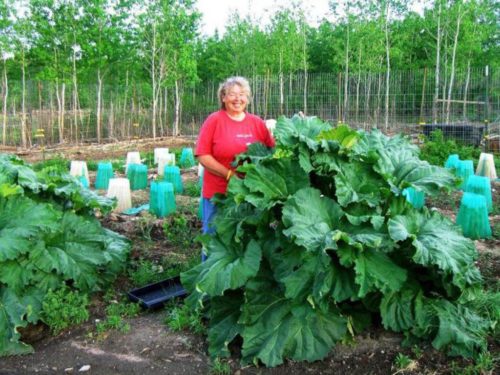
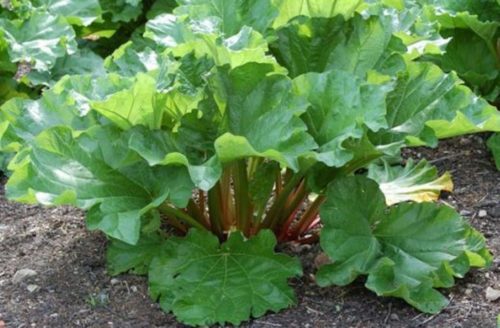
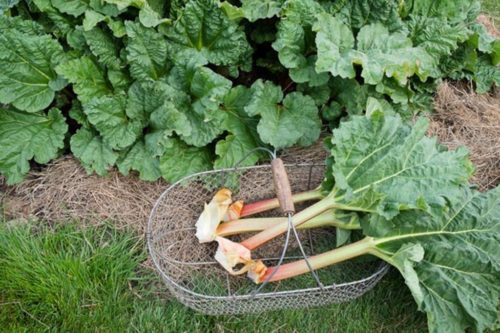












 Start a discussion ...
Start a discussion ...